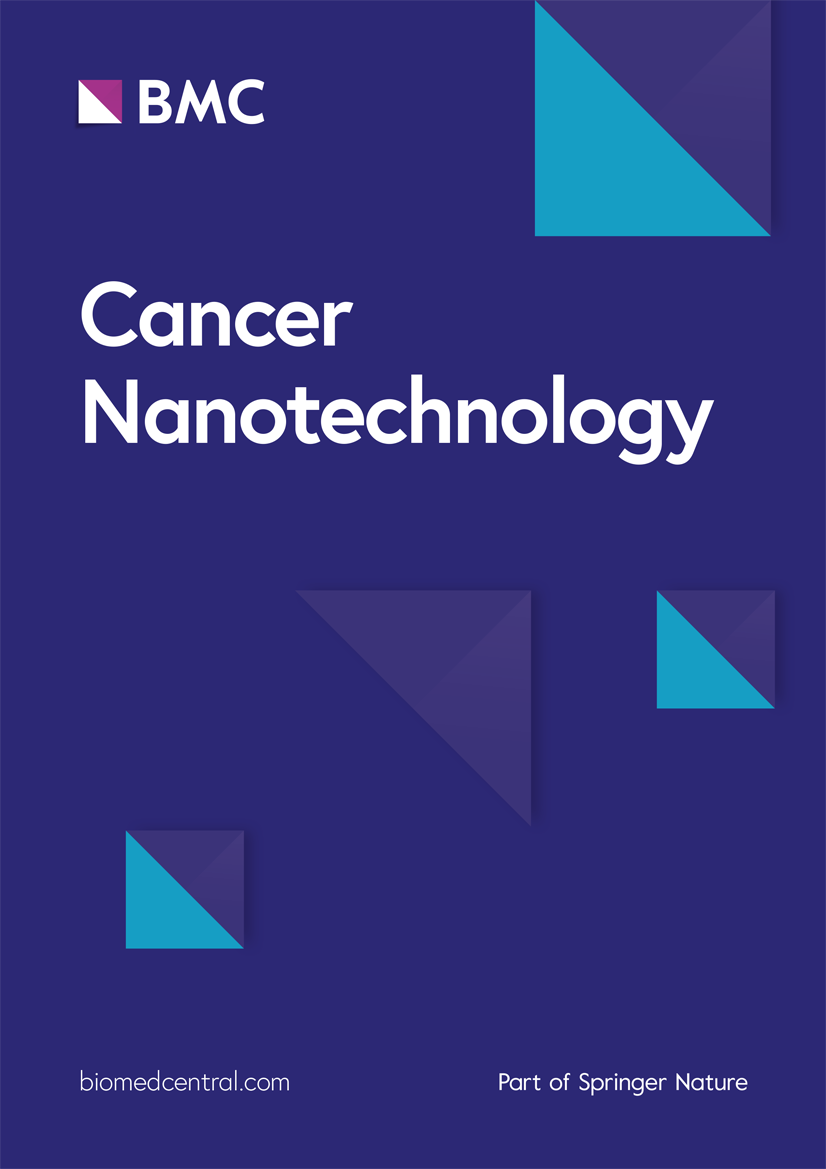Investigation of mitochondria-dependent apoptosis pathway and lipid peroxidation level induced by biosynthesized silver nanoparticles: caspase-3 activation, BAK1/BCLx regulation and malondialdehyde production
IF 4.8
2区 工程技术
Q2 NANOSCIENCE & NANOTECHNOLOGY
引用次数: 0
Abstract
Nowadays, silver nanoparticles (AgNPs) have attracted the attention of many researchers due to their special physical, chemical, and biological properties. There is strong evidence that biogenic AgNPs can act as potent anticancer agents through the production of reactive oxygen species (ROS) and initiate the mitochondrial pathway of apoptosis. That is why we decided to use Nepeta bracteata Benth flower extract for the first time to bio-synthesize AgNPs and study their cytotoxic and apoptotic effects on SK-BR-3 cells. AgNPs were biosynthesized at 70 °C after mixing silver nitrate and flower extract with a specific ratio and concentration, then were characterized using various analytical techniques, such as FESEM, FTIR, EDS, and zeta potential. Studies have shown that AgNPs have an irregular and circular shape, with about 99% by weight of silver, carbon, and oxygen. On the other hand, the appropriate size (below 57 nm) and surface charge (− 11.52 mV) make them stable in biological fluids. The better cytotoxic effect of AgNPs compared to flower extract on SK-BR-3 cells was investigated using the MTT method. The positive effect of AgNPs on inhibiting the growth of SK-BR-3 breast cancer cells was again confirmed by the sulforhodamine B staining method, so that AgNPs were able to decrease the density of cancer cells in a concentration-dependent manner. In addition, the flow cytometry test proved that biosynthesized AgNPs using Nepeta bracteata Benth flower extract can induce apoptosis in SK-BR-3 cancer cells. Real-time PCR then proved that the ratio of Bak1/Bclx, as well as caspase-3 expression, was increased due to active ROS-producing biomolecules present in the plant extract, and therefore, AgNPs can activate the mitochondria-dependent apoptosis pathway in breast cancer cells. Finally, their negligible oxidative stress on erythrocytes was confirmed by the lipid peroxidation method and showed that biosynthesized AgNPs can be used for breast cancer treatment without showing adverse effects on erythrocytes.生物合成银纳米颗粒诱导的线粒体依赖性凋亡途径和脂质过氧化水平研究:Caspase-3 激活、BAK1/BCLx 调节和丙二醛生成
如今,银纳米粒子(AgNPs)因其特殊的物理、化学和生物特性吸引了众多研究人员的关注。有确凿证据表明,生物源 AgNPs 可通过产生活性氧(ROS)和启动线粒体凋亡途径而成为有效的抗癌剂。这就是为什么我们决定首次使用 Nepeta bracteata Benth 花提取物来生物合成 AgNPs,并研究其对 SK-BR-3 细胞的细胞毒性和凋亡效应。将硝酸银和花提取物按特定比例和浓度混合后,在 70 ℃ 下生物合成 AgNPs,然后使用 FESEM、FTIR、EDS 和 zeta 电位等多种分析技术对其进行表征。研究表明,AgNPs 具有不规则的圆形,银、碳和氧的重量比约为 99%。另一方面,适当的尺寸(57 纳米以下)和表面电荷(- 11.52 mV)使其在生物液体中非常稳定。使用 MTT 法研究了 AgNPs 与花提取物相比对 SK-BR-3 细胞更好的细胞毒性效果。舒尔福多胺 B 染色法再次证实了 AgNPs 对抑制 SK-BR-3 乳腺癌细胞生长的积极作用,因此 AgNPs 能够以浓度依赖的方式降低癌细胞的密度。此外,流式细胞仪检测也证明了利用本苞片花提取物生物合成的 AgNPs 能诱导 SK-BR-3 癌细胞凋亡。实时 PCR 随后证明,由于植物提取物中存在产生 ROS 的活性生物大分子,Bak1/Bclx 的比例以及 caspase-3 的表达均有所增加,因此 AgNPs 可以激活乳腺癌细胞线粒体依赖性凋亡途径。最后,脂质过氧化法证实了 AgNPs 对红细胞的氧化应激作用微乎其微,这表明生物合成的 AgNPs 可用于乳腺癌治疗,而不会对红细胞产生不良影响。
本文章由计算机程序翻译,如有差异,请以英文原文为准。
求助全文
约1分钟内获得全文
求助全文
来源期刊

Cancer Nanotechnology
Pharmacology, Toxicology and Pharmaceutics-Pharmaceutical Science
CiteScore
5.20
自引率
1.80%
发文量
37
审稿时长
15 weeks
期刊介绍:
Aim:
Recognizing cancer as a group of diseases caused by nanostructural problems (i.e. with DNA) and also that there are unique benefits to approaches inherently involving nanoscale structures and processes to treat the disease, the journal Cancer Nanotechnology aims to disseminate cutting edge research; to promote emerging trends in the use of nanostructures and the induction of nanoscale processes for the prevention, diagnosis, treatment of cancer; and to cover related ancillary areas.
Scope:
Articles describing original research in the use of nanostructures and the induction of nanoscale processes for the prevention, diagnosis and treatment of cancer (open submission process). Review, editorial and tutorial articles picking up on subthemes of emerging importance where nanostructures and the induction of nanoscale processes are used for the prevention, diagnosis and treatment of cancer.
 求助内容:
求助内容: 应助结果提醒方式:
应助结果提醒方式:


